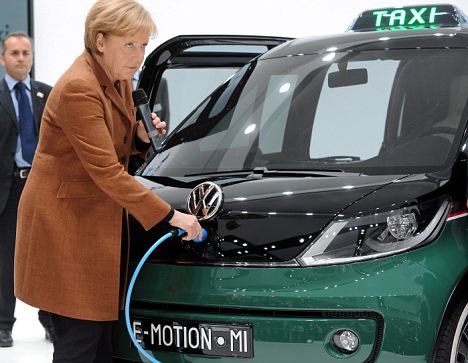Politicians throughout the European Union are considering what needs to be changed with respect to regulations of emissions and fuel efficiency. This issue has emerged partly as a result of the uniformity of policies that are to be made between the US and the EU at the request of the auto manufacturing companies. Stringent European emissions targets have directed automakers on track to reach a fleet average of 130 grams of CO2 per kilometer by 2015, mandated by the European Union. The target of 95 grams by 2020, slightly more efficient than the 54.5 mpg proposed by the Obama administration, is “reachable,” engineers tell us. But beyond that, it gets tricky.
The possibility of reducing CO2 fleet emissions to between 68 and 78 grams by 2025 exists. The cost of achieving such goals will be massively expensive, and would require a huge fleet of electric vehicles and plug-in hybrids. For electric cars, Europe’s bureaucracy doesn’t account for the emissions created by the generation of the electricity powering EVs, stipulating that their CO2 emissions are zero. The testing cycle of plug-in hybrids consists of equal parts of operation with a depleted battery and full charge, and again, full-charge operation is considered to be zero emission. Plug-ins are expensive, but adding batteries and electric motors to otherwise-conventional cars is still more cost-effective than any other avenue in lowering consumption and emissions to Europe’s proposed ultra-low levels, making them the de facto solution to meeting Europe’s standards.
Even though some members of the auto companies are concerned that electrification must be central to any move forward, and that offering such an option is crucial in reaching the standards proposed to be set by the EU, along with many others, electric vehicles and plug-in hybrids will continue to gain favor in the political world and will continue their growth in both in Europe and the U.S. Some automakers are also concerned that it is the production of the higher-end cars that is damaging their overall ability to reach these standards. At the end of all this, virtually every premium car offered in Europe soon will be available with a form of electrification. And you can bet that they will be pushed onto the market aggressively.



